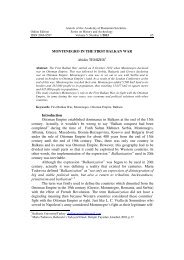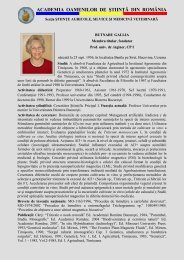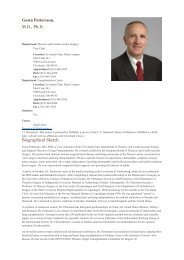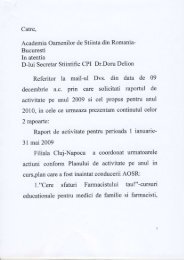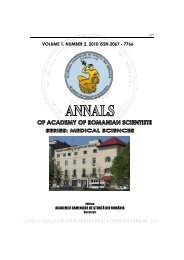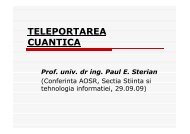Volume 3 nr 1 / 2011 - Academia Oamenilor de Stiinta din Romania
Volume 3 nr 1 / 2011 - Academia Oamenilor de Stiinta din Romania
Volume 3 nr 1 / 2011 - Academia Oamenilor de Stiinta din Romania
- No tags were found...
Create successful ePaper yourself
Turn your PDF publications into a flip-book with our unique Google optimized e-Paper software.
Critical Infrastructures ProtectionA <strong>Romania</strong>n Perspective (Part 1) 109citizens, can bear a high political cost. Therefore, political <strong>de</strong>cision-makers willcarefully monitor the reactions if such situations occur, particularly of those“charged with electoral potential”.In the sixth place, the authorities and the lea<strong>de</strong>rship of both the public andprivate sector fail to employ staff and provi<strong>de</strong> all the resources in time, when itcomes to highly specialized critical infrastructures such as the ones in theinformation systems sector. The training and the stability of highly qualifie<strong>din</strong>formation specialists are challenges of all sectors with workforce mobility in acompetition environment.In this sector, specialists are “headhunted” by institutions in the national securitysector, by the IT sector, by finance and banking institutions, by the national andmultinational private sector or by international organisations.The outsourcing of IT services to overseas companies can provi<strong>de</strong> well-paid jobswith <strong>de</strong>localization at distances of hundreds or thousands of kilometres.In the seventh place, the central and local authorities must be aware of theneed for the continuous assessment of the state of infrastructures, particularly ofcritical ones, and to set specific standards and clear responsibilities for theirprotection. Suitable legislation is nee<strong>de</strong>d to set responsibilities for the authorities,key institutions, to integrate their activities into a comprehensive civil protectionconcept, to train the personnel having special responsibilities, to integrate all intoa coherent, flexible system, et al.In the eighth place, the public-private partnership is mandatory for criticalinfrastructures, consi<strong>de</strong>ring that the majority percentage is owned by the privatesector in this domain.Legislation must provi<strong>de</strong> acknowledgement and regulations with respect tomutual rights and responsibilities. There is a need for a continuous dialogue oncritical infrastructure issues between the authorities and the private sector. Thedialogue must start during periods of normal conditions so that cooperation couldfunction smoothly right from the beginning of an emergency or critical situation.In this respect, authorities must i<strong>de</strong>ntify incentives for a functional partnership,and at the same times apply sanctions when the usage of specific infrastructures isobstructed.A special case is that of foreign companies or institutions operating on thenational territory, either in<strong>de</strong>pen<strong>de</strong>nt firms or multinationals.In the ninth place, the responsibility for provi<strong>din</strong>g information regar<strong>din</strong>g thelocation, physical state, and legal nature of key critical infrastructures rest with thenational and local authorities. Even though critical infrastructure protectionCopyright © Editura Aca<strong>de</strong>miei <strong>Oamenilor</strong> <strong>de</strong> Știință <strong>din</strong> România, <strong>2011</strong>Watermark Protected



